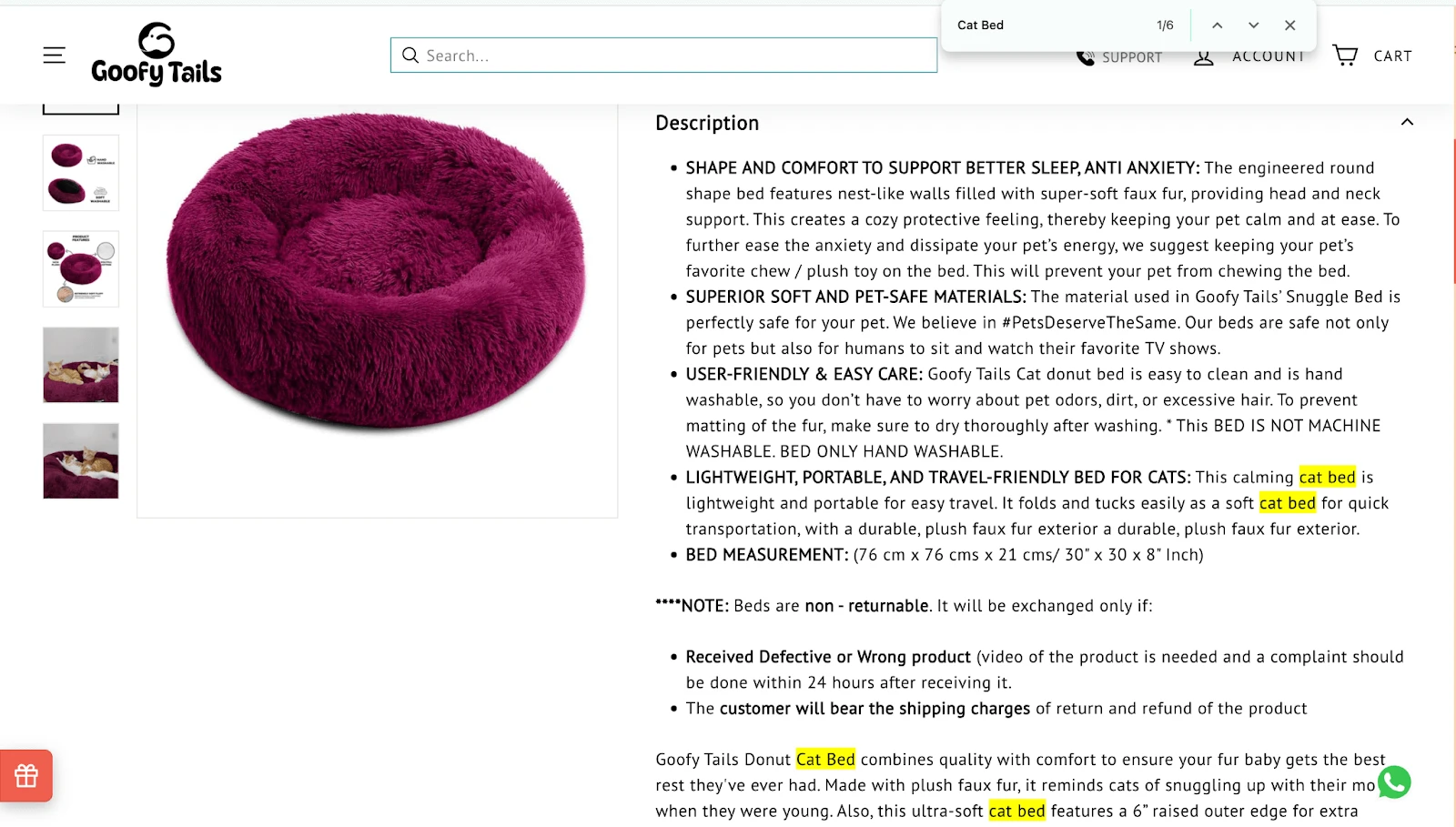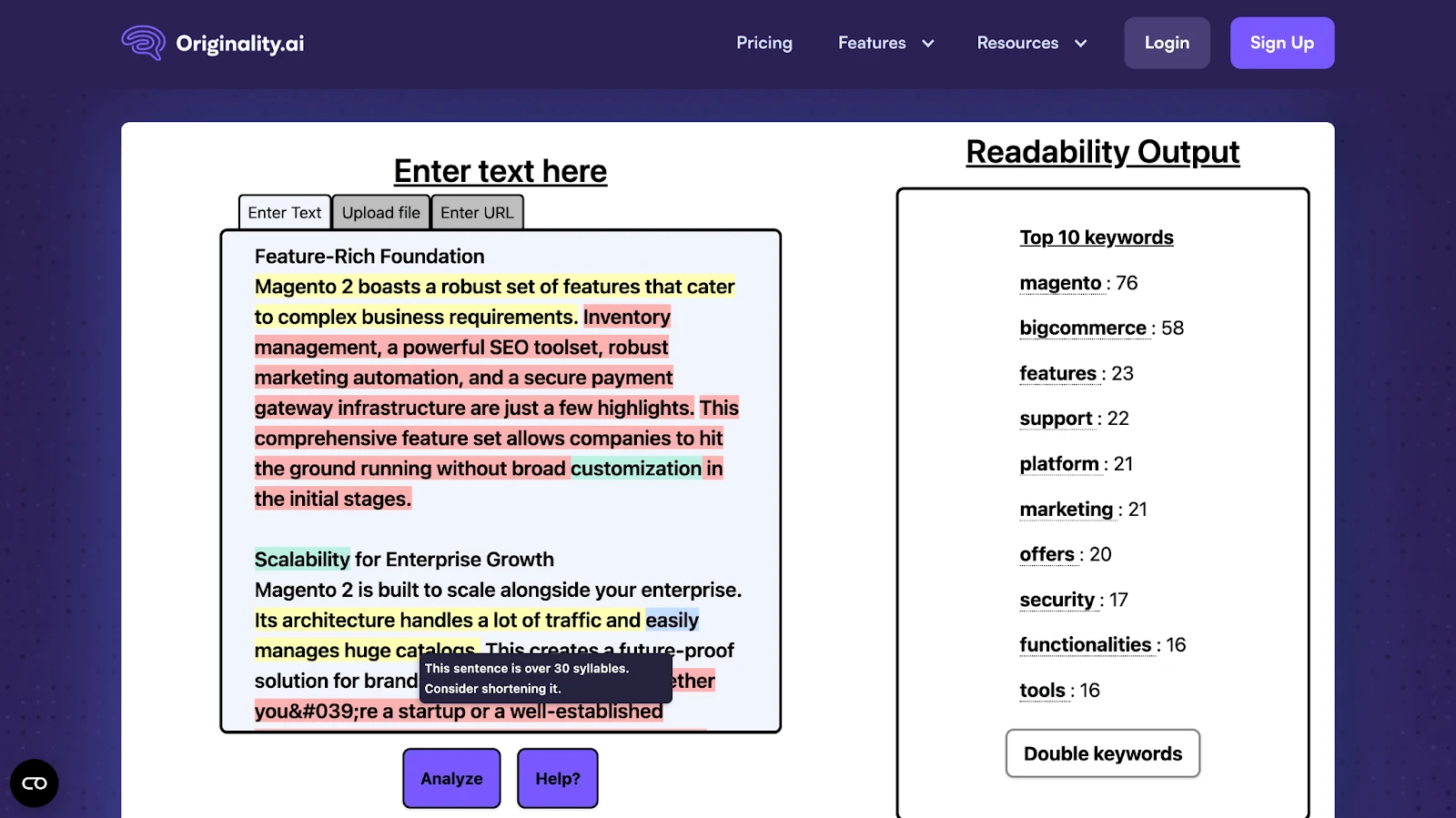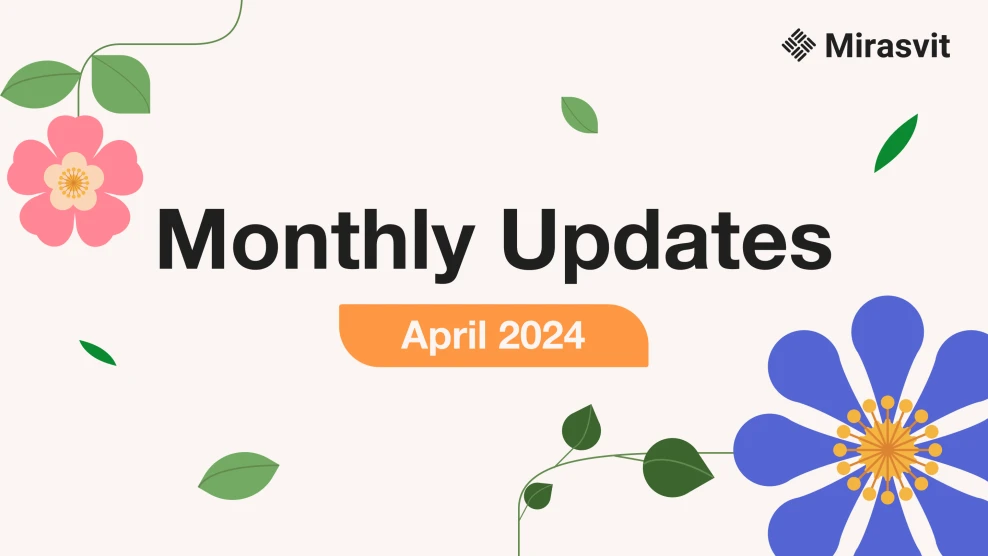How to Avoid Keyword Stuffing in E-commerce SEO
-
 Kateryna Boiko
Kateryna Boiko
- E-commerce Tips & Best Practices
- 7 min read
This guest post was written by SE Ranking Team
Keywords can help tremendously when it comes to rankings—but cramming as many search terms as possible into a page is counterproductive. If you butter the content with loads of keywords, your website may be in danger.
In this article, we explain what keyword stuffing is, why it is bad for your e-commerce SEO, and the correct, healthy ways of optimization. You’re going to learn when and how to incorporate keywords—and specific samples.
Table of Contents
- What Is Keyword Stuffing?
- Why Keywords are Crucial for E-сommerce SEO
- Keyword Stuffing Impact on E-commerce SEO
- Keyword Stuffing Examples
- How to Avoid Keyword Stuffing
- 1. Insert the Target Keyword to the Page Elements
- 2. Use Secondary, Long-Tail Keywords, and Synonyms
- 3. Create High-Profile Content
- Summary
What Is Keyword Stuffing?
Keyword stuffing is a spammy practice used in SEO. It happens when the website owner crams its web pages with keywords with the only intent of achieving a better ranking:

There is no specific count of how often you can use your terms in the content before it starts suffering from keyword stuffing. However, placing them unnaturally will lead to negative consequences such as a decrease in rankings, conversions, etc.
Keyword stuffing may also occur in:
- Title tags and Meta descriptions
- URLs
- Hyperlink anchor text
- Image Alt text
To get rid of excessive keywords, review your content and scrounge for misused or overused ones. As a rule, one word shouldn’t have a relative frequency of appearance higher than 3-4% within one article. Focus on reading convenience firsthand when checking your texts.
Why Keywords are Crucial for E-сommerce SEO
Keywords form the base from which any e-commerce SEO strategy can stem. They act as a bridge between the needs of the users and what you can provide as a business. If you do it correctly, it becomes easy to determine the right keywords. This means that your e-commerce site will be indexed for the right search queries, attracting more traffic and chances of conversions.
Keywords help Google and other search engines to determine whether your page is relevant to certain searches performed by consumers. You can make it appear on the first page of a search engine results page through the right keyword placement in product pages, categories, and blogs.
Selecting those phrases is not a problem—but therein, the challenge lies:
Using them properly.
The use of primary and secondary keywords will also enable one to capture users at different levels with different intents. This raises the chances of getting a more relevant audience that is most likely to convert.
Such search queries can be identified by analyzing the volume and competitiveness using the keyword tool. With its help, you can estimate the search volume and difficulty of each prospective keyword. Also, you can find synonyms and variations to cover a bigger audience. Prioritize your keyword list based on the stats provided and use when creating your pages.

Keyword Stuffing Impact on E-commerce SEO
Content is the new oil—and stuffing leads to the production of low-quality content, which is never good for SEO. This may cause a decrease in users and affect your brand negatively.
Targeting high-quality content is appreciated by Google. So, if you ignore this and incorporate as many keywords as possible in a single webpage, don’t expect your content to rank high.
Finding the precise example or a case where stuffing elimination helped to grow website rankings is challenging. This is because this type of optimization is most often implemented in a complex with other on-page component optimizations like meta tags, site speed, etc.
However, keyword stuffing optimization is crucial, as the practice violates Google’s anti-spam policies . This means it is subject to manual action (also known as a Google penalty).
So, why do e-commerce stores use so many key phrases?
Long ago, using lists of keywords was a technique perfect for ranging in SERP high. The more repetitions, the more relevant the page is—that was the algorithm. Since then, Google has released many updates targeting stuffing and recognizing context. Today, the algorithm values topic coverage and search intent comprehensiveness above keyword frequency. To rank for a keyword, you do not have to use it a given amount or have many backlinks with key phrases inserted in the anchor text.
Keyword Stuffing Examples
Below are the two main types of keyword stuffing techniques.
Visible Keyword Stuffing in SEO
This case corresponds to pages that cite keywords so many times that they simply couldn’t go unnoticed by Google Algorithms. Such practice leads to low text readability and, consequently, poor usability. Behavioral factors plummet, along with your conversion rate.
Here is an example of stuffing in the product description—the word “best running shoes” is used several times, which forms an unfavorable brand image.

Invisible Keyword Stuffing in SEO
Invisible stuffing involves concealing keywords within content so visitors can’t see them. But crawlers can—and this is how they influence Google rankings.
Popular invisible key terms incorporation practices include:
- Writing in white on white
- Using key terms outside the visible screen area
- Embedding keywords in CSS
- Using HTML codes, such as comments and 'alt' texts
This kind of placement is deception. Such a practice will lead you to negative consequences rather than boost your rankings.
How to Avoid Keyword Stuffing
The best strategy to exclude keyword spamming from the list of your SEO problems forever? Focus on your customer experience excellence. When you keep your customers’ values in mind, your e-commerce pages won’t have any stuffing naturally.

Below are more specific practices to implement to avoid such an issue.
1. Insert the Target Keyword to the Page Elements
Key page components—title, H1 header, alts, and meta description—are the best places for primary keywords. These elements tell the search engines what search intent this content covers. Placing keywords close to the top makes them visible to the crawlers. No need to use more than one term in this case—since you don’t want to confuse crawlers.
You can also use Magento extensions like Advanced SEO Suite that can help generate SEO-friendly metadata. This strategy also ensures the given keyword is used purposefully. At the same time, such content is easily readable.
Let's assume your target search query is "leather handbags." Here's how you would optimize the page elements:
- Page Title: Buy designer leather handbags online.
- H1 Heading: Visit our exclusive Leather Handbags section and find your perfect bag.
- Meta Description: Look at these handbags made of real leather: Our products are made from quality materials that will last for a long time. Buy now and you will get a 10% discount.
2. Use Secondary, Long-Tail Keywords, and Synonyms
Secondary, long-tail keywords and word variations can prevent keyword stuffing. They ensure you cover the main topic area in full while also making the content seem natural and relevant.
Many SEOs share their feedback that direct term inclusion doesn't work anymore. This makes perfect sense—Google now knows how to spot readers' intent, so crawlers understand where there are synonymous phrases. Adding variety improves content without spam. So, once you place your main term, add other relevant phrases to cast a wider net and give search engines more information about your page contents.
To find long-tail keywords, use AnswerThePublic or SE Ranking tools. They show you what queries people search for and help you understand potential customers’ needs.
For our "leather handbags” example, incorporate secondary terms, synonyms, and long-tail phrases this way:
- Synonyms: “Genuine leather bags," "women’s leather purses," "leather totes".
- Long-Tail Keywords: “Leather handbags for women at a cheap price,” “The best leather handbags to use in the office,” “Leather bags at a price of less than $100”.
3. Create High-Profile Content
Creating loads of high-quality, unique content is critical for e-commerce SEO strategies. Concentrate on producing reliable, interesting, relevant content to resonate with your audience. If you are writing informative, meaningful content, there is a high chance your website will rank high with search engines. Websites giving users what they want are favored by search engines.
To make your content more readable, use Originality.ai or the Hemingway app. Both are tailored to help you make sure your text is easy to read. Avoid going too heavy on the informative angle while steering clear of overloading your articles with terms.

Summary
One of the worst mistakes of every e-commerce site is keyword stuffing. This type of misuse can cause a decrease in rankings and even manual action from Google.
There are particular techniques that can improve your content and make it more effective. Some of the strategies that may be used include improving meta tags or using second-tier long-tail terms. But remember: using keywords naturally is always advised when you want to write quality content.
Applying this knowledge ensures that you get the most from your SEO and user interaction without ending up with stuffing.
From meta tags to the sitemap, the Magento 2 SEO Extension gives you full control over each and every SEO-related feature in your store.
This extension is a SEO powerhouse that provides major enhancements to all pages of any online shop.
This amazing package will save you an incredible amount of time and money, all while securing your site's place at the top of the search results!




